
Garbology is a side effect of stalking
Exploring the city and its abandoned places, I constantly find something – this is a stalker swag as it is. For some, this is rubbish among other rubbish, but in my opinion it is interesting! This is such a light version of garbology with a historical direction (or as it is called «junk archeology»).
But was it worth the bother?
Watch and read, and then decide whether it’s garbage or part of history. One way or another – I donated this find to the funds of the Museum of the History of the Dnieper – maybe someday it will become a small part of the future hall dedicated to the industrial development of my city.
In September last year, I took a little «walk» with @brodyaga_stalk at an abandoned industrial site of a metallurgical plant, namely, on the old industrial territory of NPP.
We visited the bomb shelter (link to the message from the @brodyaga_stalk location on instagram), which was half-flooded for about a year, but now it has become almost dry, so we decided to inspect it.

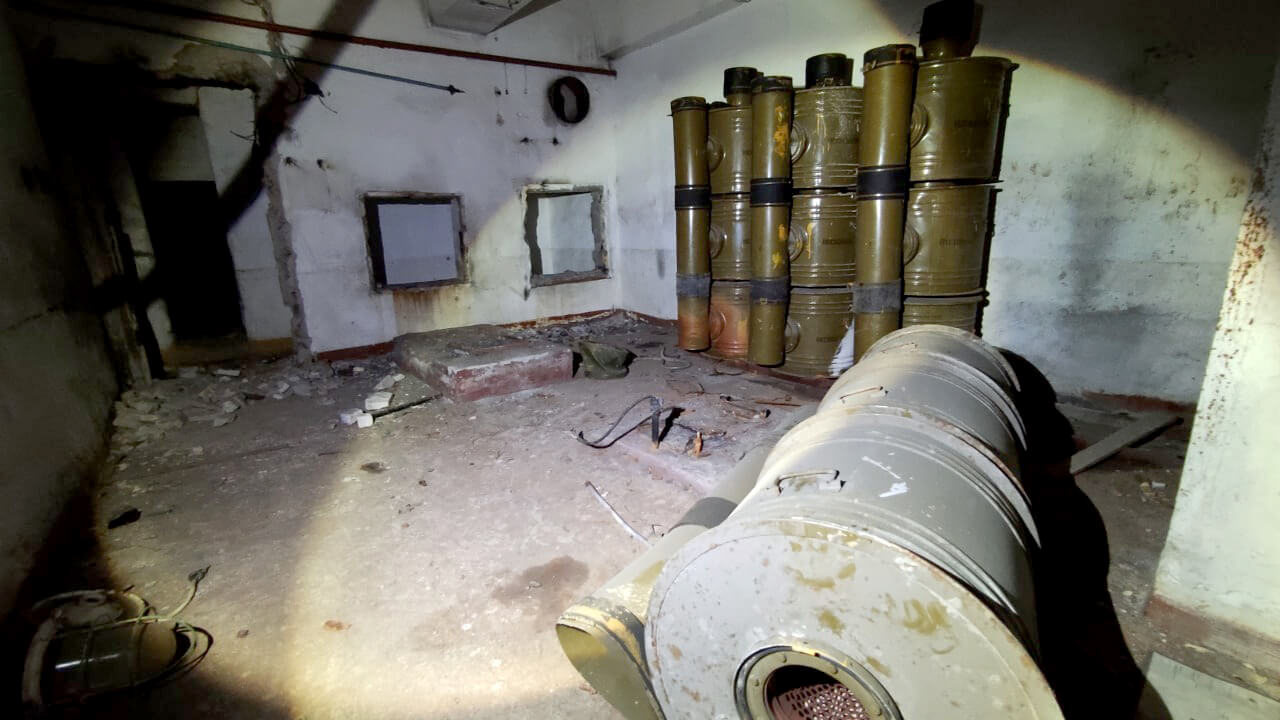
We found a few highlights there, including these photos. These artifacts were miraculously preserved from flooding – because the water did not reach the shelf where they were stored literally by 12-15 centimeters. What exactly was in those photographs was difficult to understand, because from prolonged exposure to moisture, the photographic paper was still very damp, because everything stuck together in one pack.
Since I have been practicing film photography for more than 20 years, I decided to try to save at least some information from these finds if possible. But this process is lengthy.
Brought home this stalker finds. I examined and understood that damage is inevitable (high quality paper can withstand moisture, but the ultra-thin layer of photo emulsion is very vulnerable). But still worth a try, and suddenly there is something interesting.
If someone has to find a pack of stuck photos – that’s why I consider it necessary to describe the resuscitation process a little.
I found a large water container at home, made a weak soapy solution at room temperature (it should be noted that it is important to use organic soap, for example, regular unscented laundry soap, and not chemical detergents), put this pack of photos there. The paper should separate from each other as it becomes saturated with water. In general, I had to keep these photos in the water for a little over a day – they were so glued together. Then I carefully separated them and carefully washed off excess dirt with a soft brush, rinsed with slow-flowing cool water.
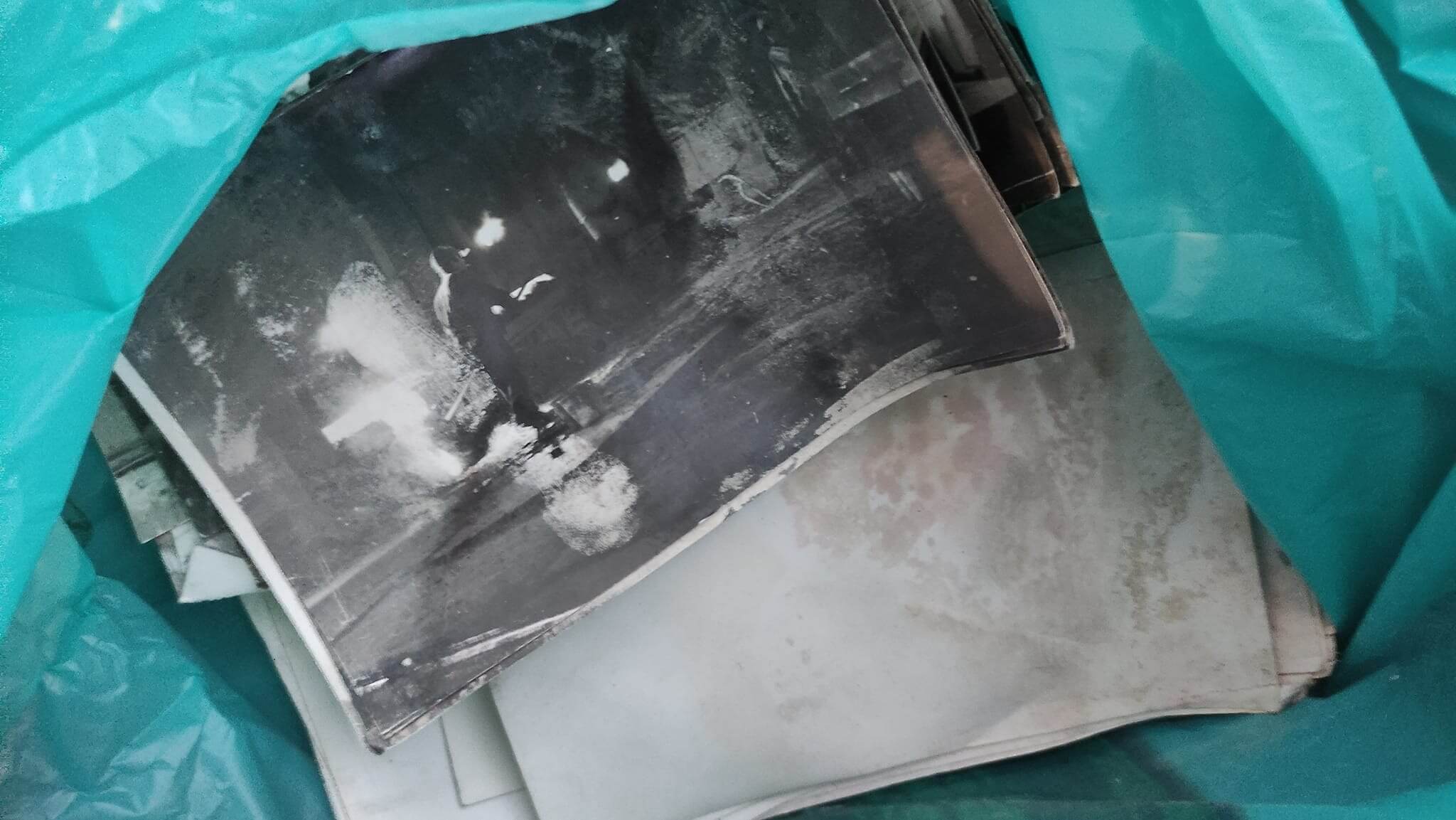
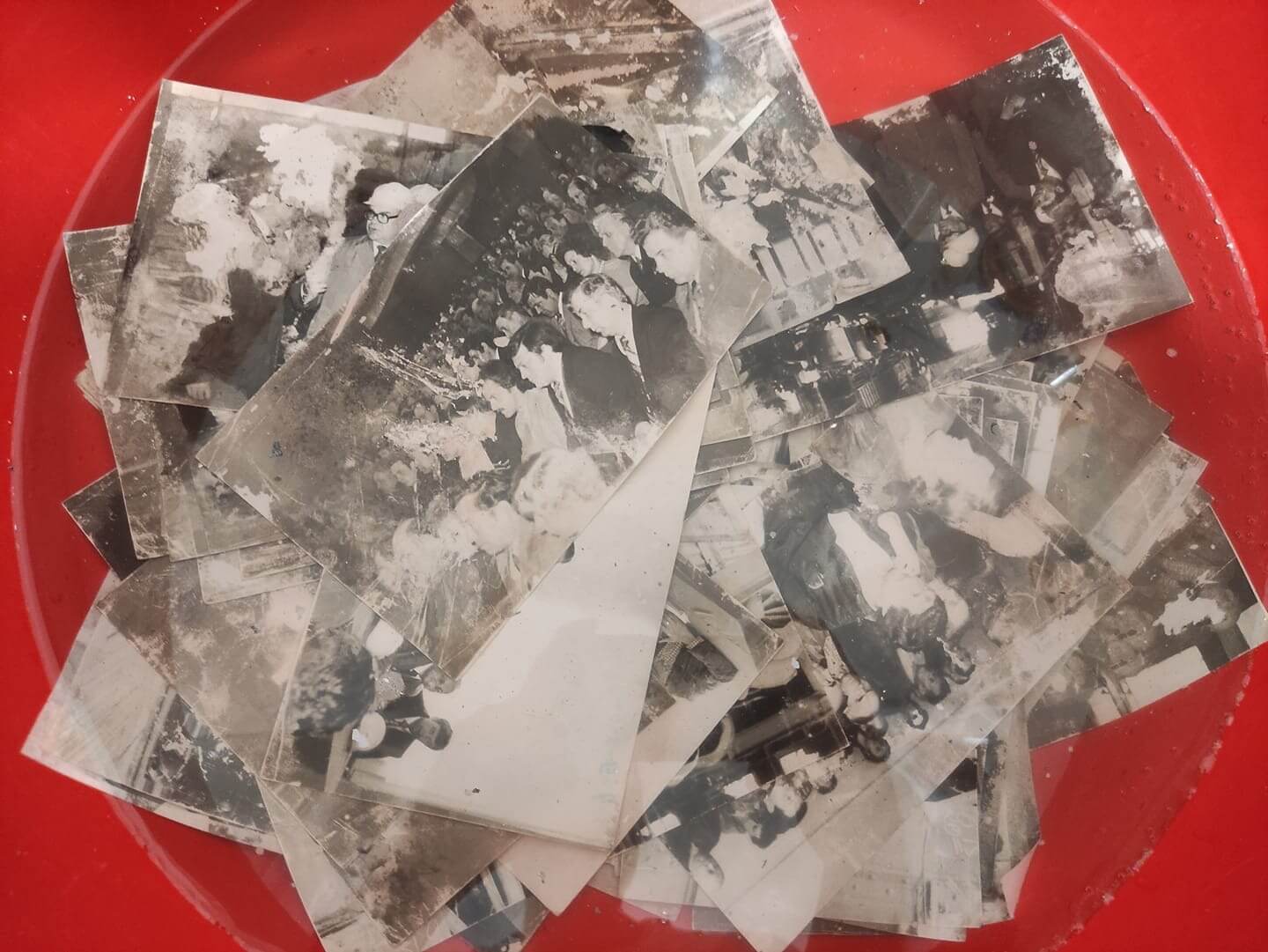
The first stage went even better than I had hoped, but it is the second stage «drying» that is decisive, because it will be clear after it whether the photographic emulsion will hold on paper after a long dampening. Forecasts, in my opinion, are not comforting …
I was lucky that most of the photos were in multiple copies and I could try different drying options on more damaged photos, thereby preserving more informative copies.
I had only two drying options; heating with electro-gloss and conventional drying on clothespins (like drying clothes). The second option is long and deforms the paper from it. Therefore, I decided to first try with a glossy – it is faster and the paper almost does not deform during drying. After the first attempt, it turned out that the photographic emulsion was in very poor condition and no longer adhered to paper at all – it simply crumbled. Most of the images of the test drying, unfortunately, remained on the glossy, so I still had to wash this device.
So I was left with only one way out – the usual drying. I hung everything on the balcony for twelve o’clock.
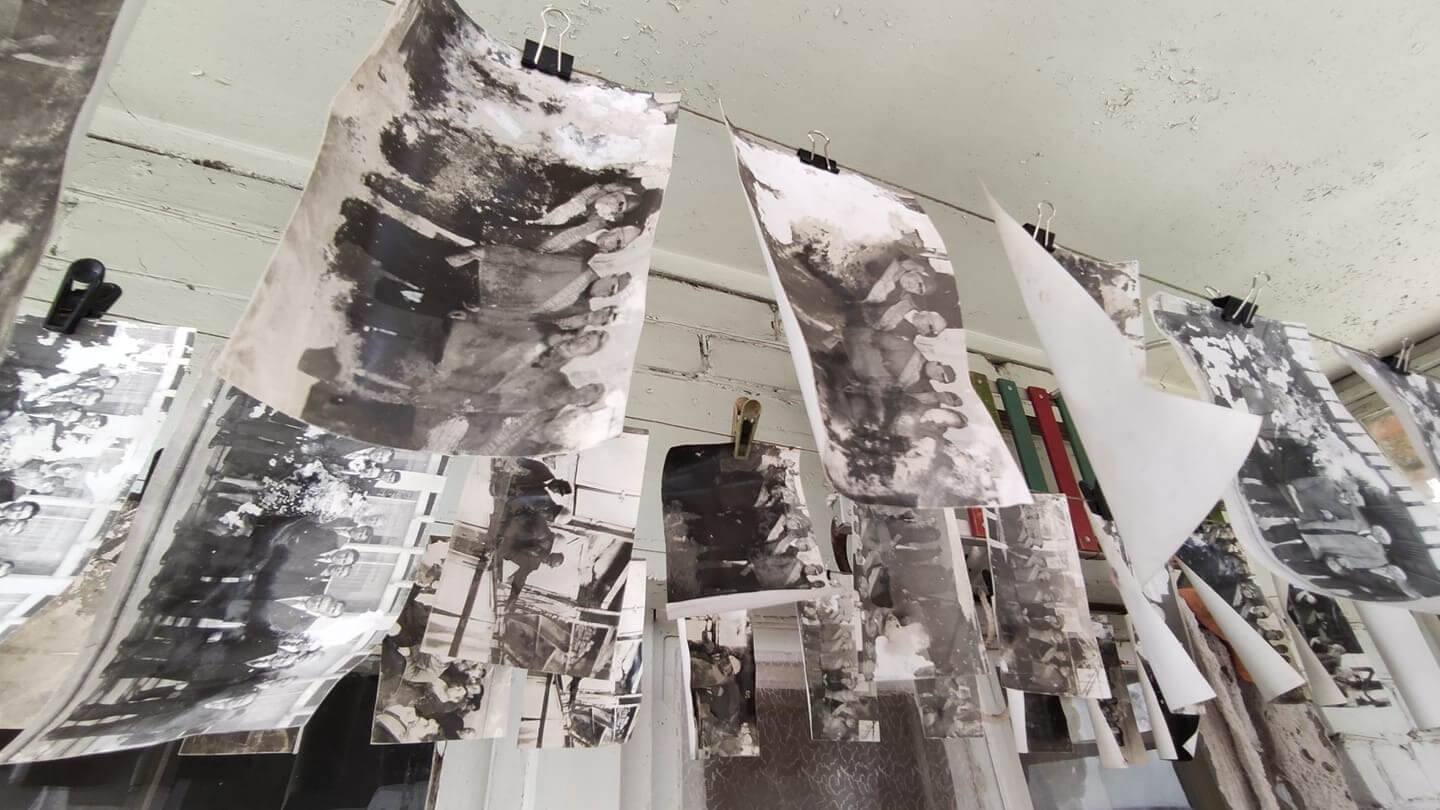
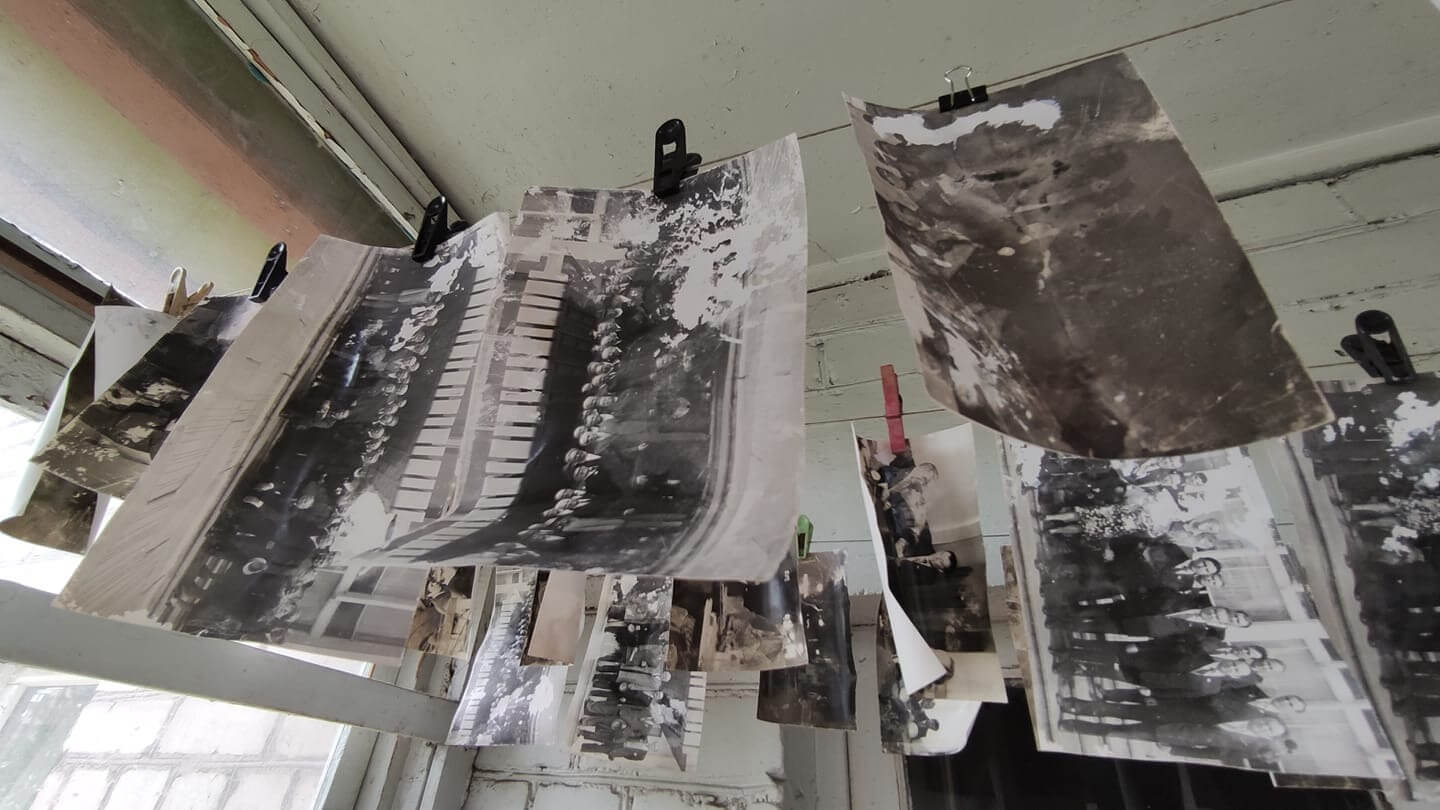
After drying, I began to sort the pictures. I counted 18 photographs, all the rest of them are duplicates of a different number. The condition is different – from bad to irreparably damaged. I chose more or less goals – the rest, unfortunately, went into the trash …
But in the future, the selected photos still need to be aligned, but without heating (remember my fiasco with the glossy).
Therefore, choosing less damaged copies, I put them among the pages of a large book (I have a home-made book that I don’t feel sorry for) to align the photos – some pressing (this is how tree leaves were dried in childhood). In this state, my «patients» spent about two weeks until they became equal and stopped twisting. But, as I said, the photo emulsion is very damaged, so the image crumbled a little. The damage condition of some photos is approximately 15% to 30%.
I heard somewhere that showered photo emulsion can be fixed with aerosol varnishes or adhesives, but there is a risk of making it worse because some varnishes contain active chemicals that are not in favor of the photographic image. That is, you can do this only with proven means, but I didn’t have such … and there wasn’t time either – I had to hurry with digitalization in order to save as much as possible.
My friend Svyatoslav Chiruk, a well-known historian and employee of the Museum of the History of the Dnipro, became interested in these photographs (he, like me, is a little interested in the industrial history of the city of Dnipro and the region). Arrange with him about scanning. Since neither I nor he has extra time – part of the photo was scanned by Svyatoslav, and part was scanned by me *. (* – Mr. Alexander Volok – don’t swear, but you scan us better, but this is a special case, but your scanners will be cleaner).
Since all the photos and their duplicates had varying degrees of damage, I decided to work with these materials in a photo editor after scanning. Namely, take scans of all identical duplicates and overlay them one on one in layers, and then removing the damaged areas on each layer (they almost did not match in different photographs), leaving only informative areas – this way you can restore maximum information. Good idea – but, unfortunately, not all photos can be restored entirely, because some of them have several copies, and some in one copy, and there is a lot of damage.
Of course, I could have tried to make a full digital restoration of these photos, but I didn’t – it’s a very long and painstaking process, and such a task was not set. I like them shabby – this is the influence of time and events.
What's in the found photos?
Due to the fact that one photo was signed, it was easy to understand what exactly was happening in this series of photos. Even the date remains. Therefore, I advise you to always sign your printed photos – this will help your descendants write your story!
This inscription was on the photo (in Russian):
«Presentation of a certificate of honor by the President of the Supreme Council of the Ukrainian SSR, Minister of the MChMUSSR Comrade Kulikov, on the day of the celebration of the 50th anniversary of the open-hearth shop on May 5, 1984, comrade. Shevchenko G.G.»
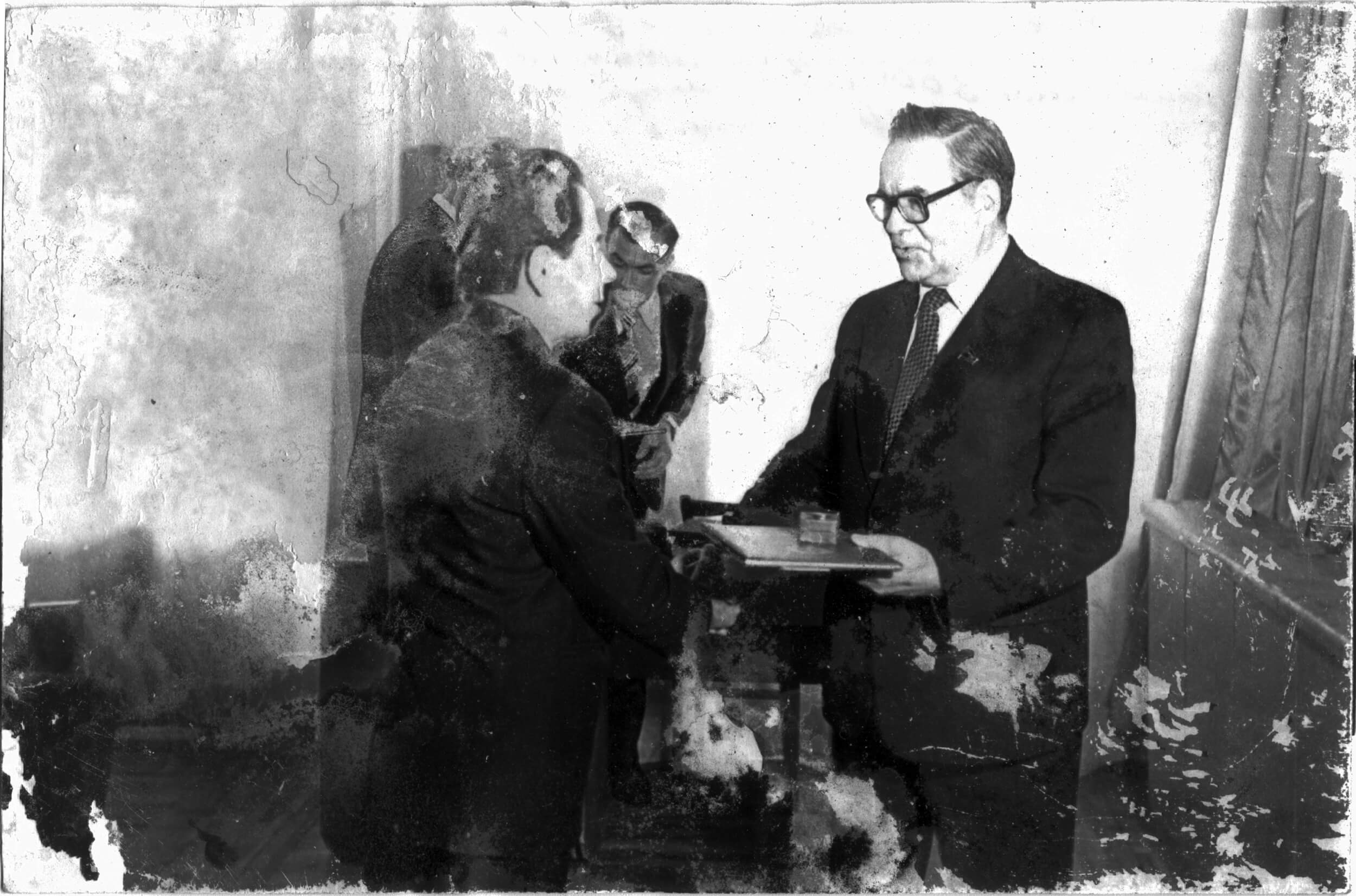

MChMUSSR - Ministry of Ferrous Metallurgy of the Ukrainian Soviet Socialist Republic
Comrade Kulikov was not just a “comrade”. I managed to identify the person – this is Yakov Pavlovich Kulikov (link to the person on Wikipedia).
I (forgive me) am not a Soviet drocher – therefore, I am not interested in the outstanding party merits of this person. But what is important to me in this person is that he really was an outstanding metallurgist. He devoted most of his life (from 1938 to 1956) to work at the Azovstal plant. From 1956 to 1965 he worked in the department of the black metal industry of Ukraine (then still the Ukrainian SSR), and after 1965 he was the minister of the MChMUSSR. Since 1981 he retired and lived in the city of Dnepropetrovsk (now it is the city of Dnipro). In 1995 he died and was buried at the Zaporozhye cemetery in the Dnieper.
Kulikov was an outstanding figure, but there is little information about him online. So the photographs found by the Dnieper stalkers are a small contribution to the personal history of this person.
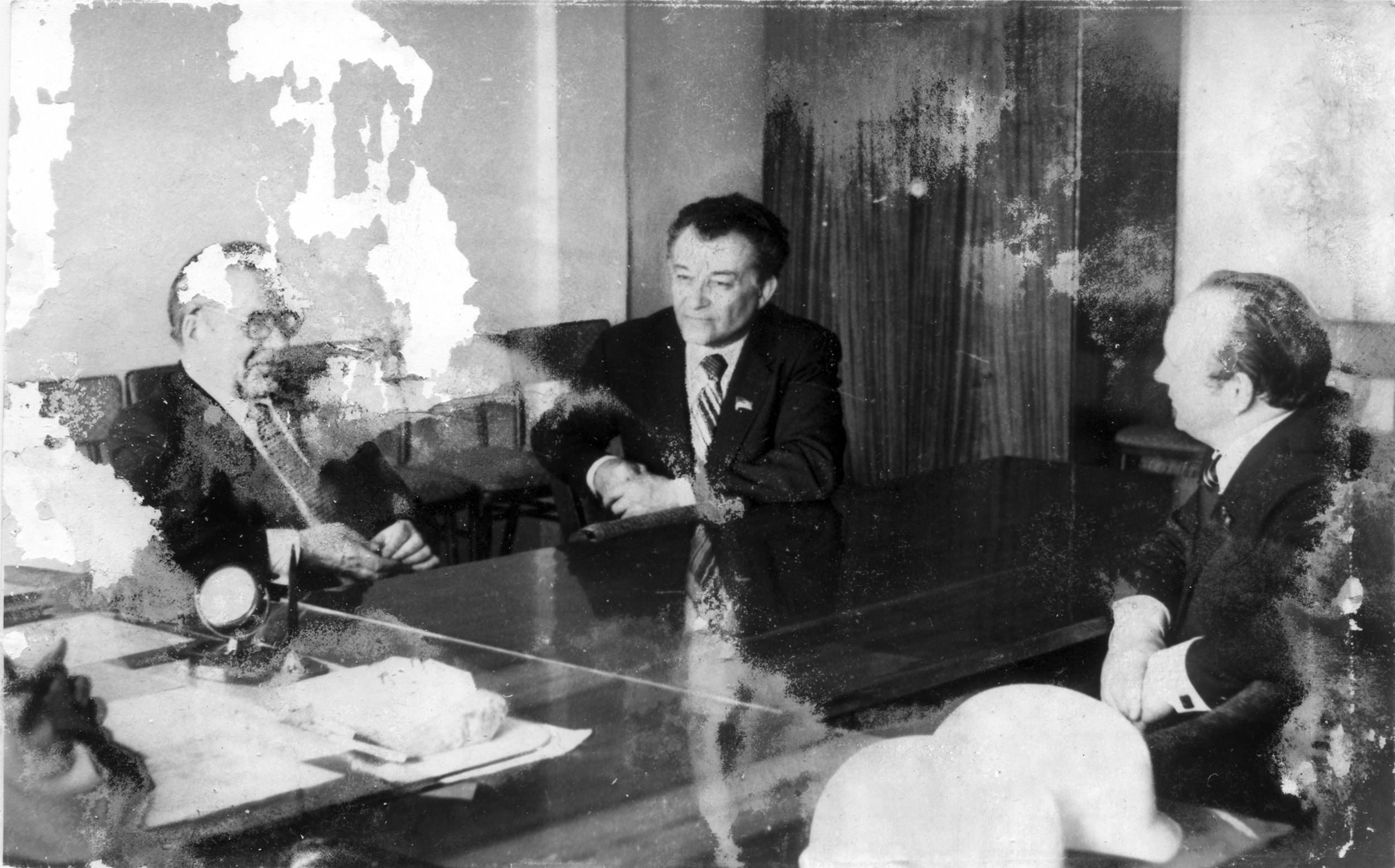

As for the metallurgist G.G. Shevchenko, who was awarded a diploma, I don’t know anything about him. Most likely, he is a leader or a veteran of production. I hope that at least some information about him has been preserved in the NPP museum.
As for the other photos – they were taken on the same day – that is, this is a whole series, they were presumably taken by the press photographer of the plant. The heads of the plant and the head of the shop are conducting a sightseeing tour of Mr. Minister.



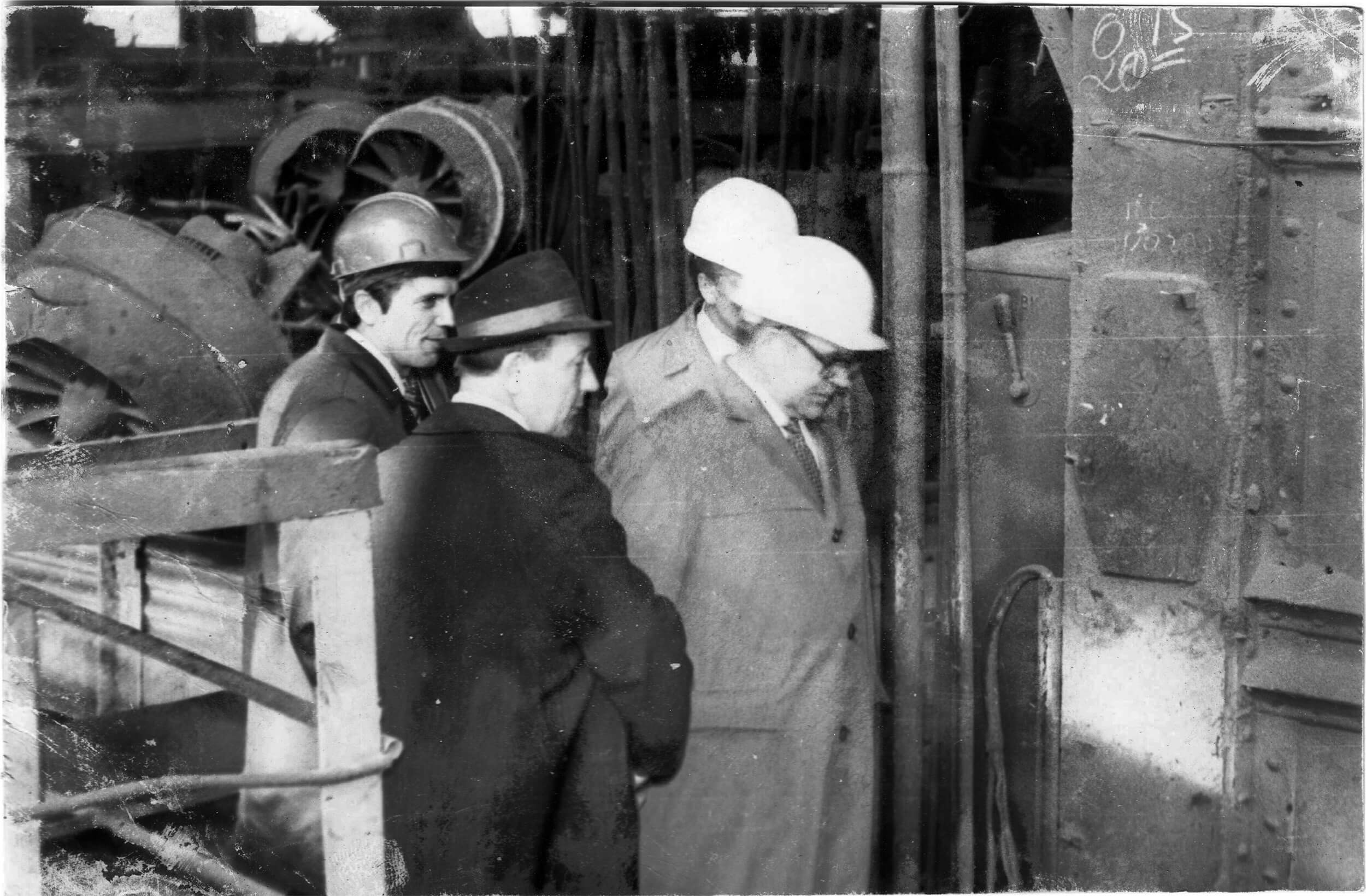
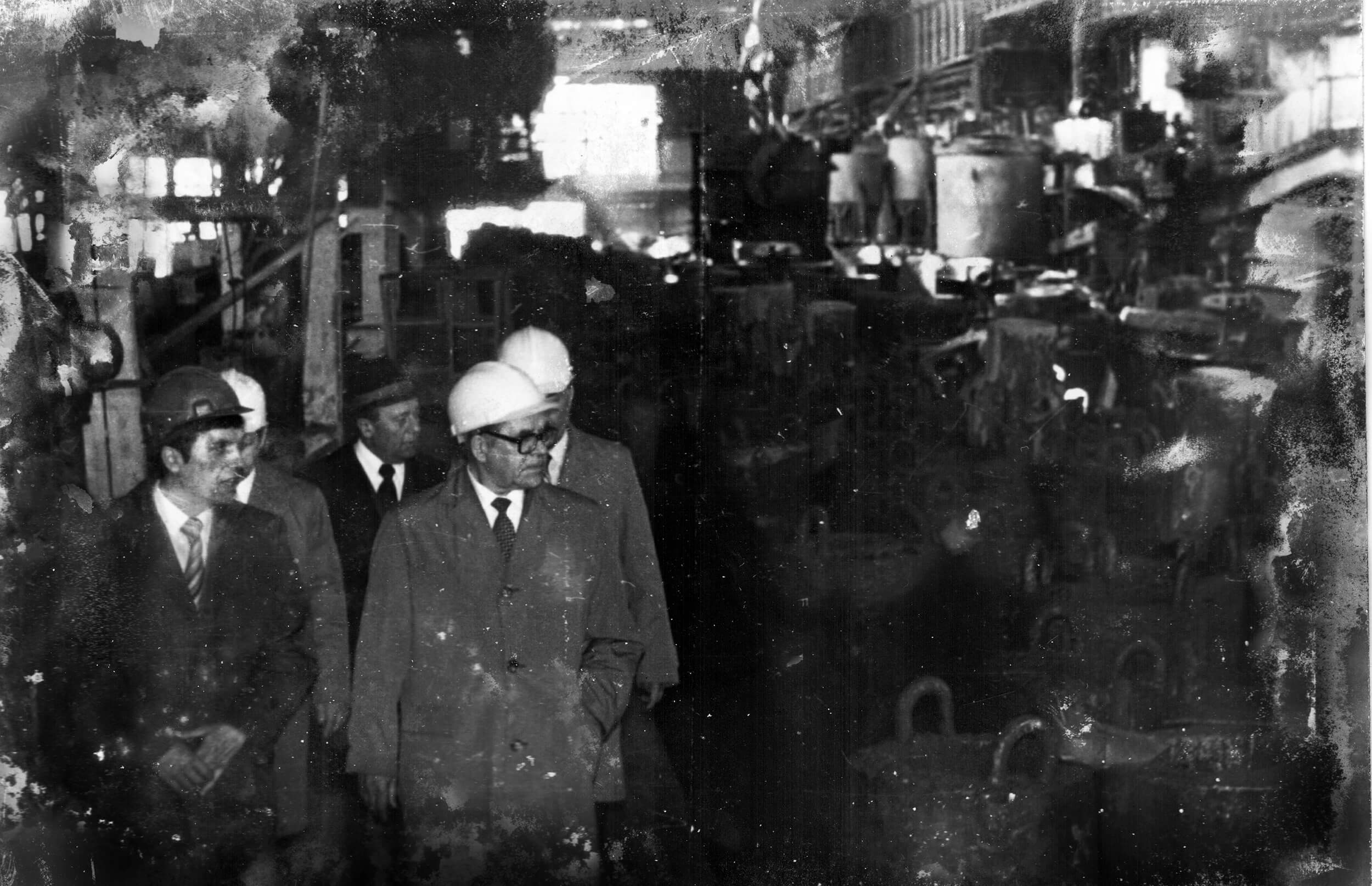

Also interesting are several photos of the team that performed the anniversary steel melting – they are posing near the March furnace in breast ribbons with the inscription «PARTICIPANT OF THE JUBILEE Smelting».
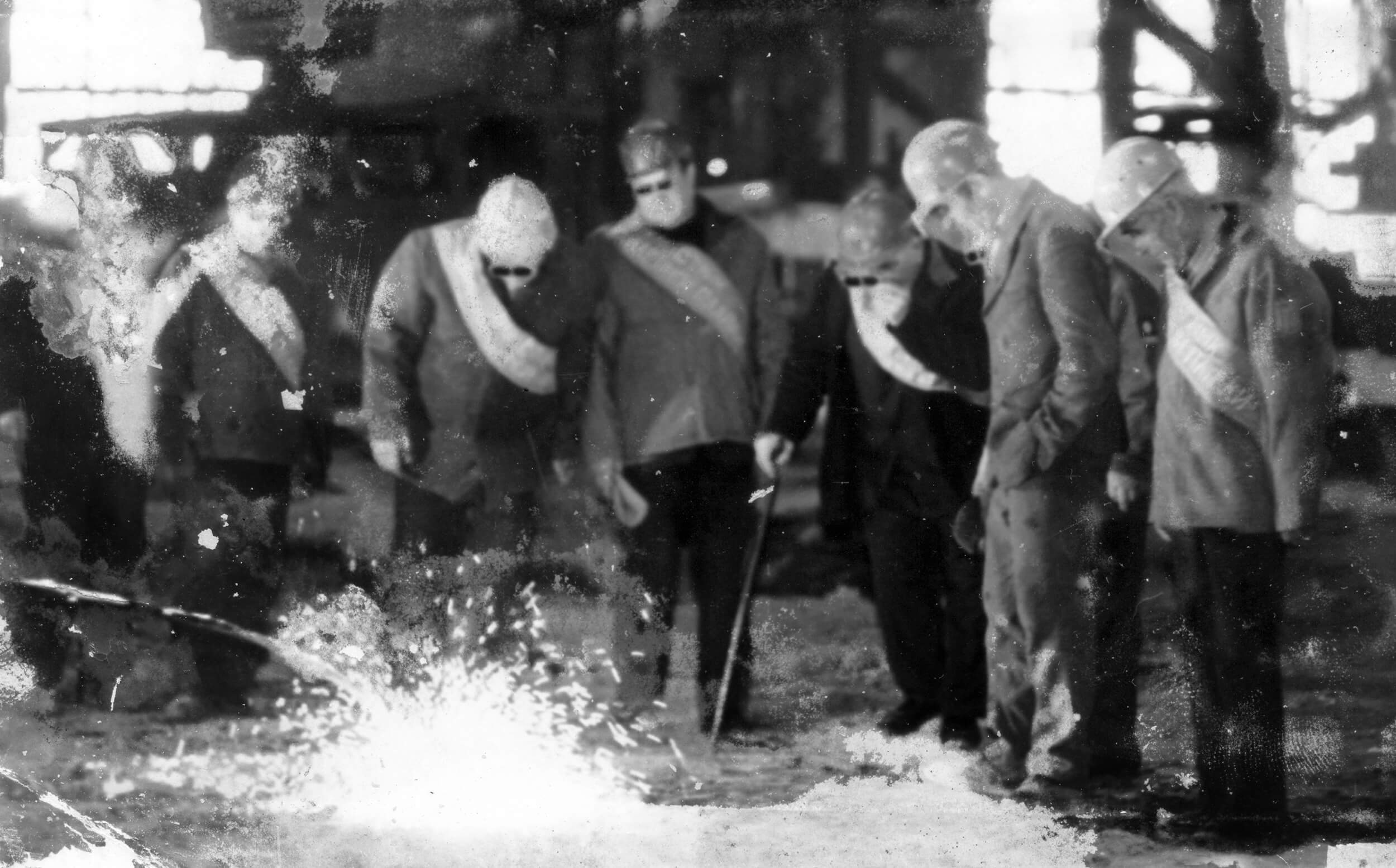
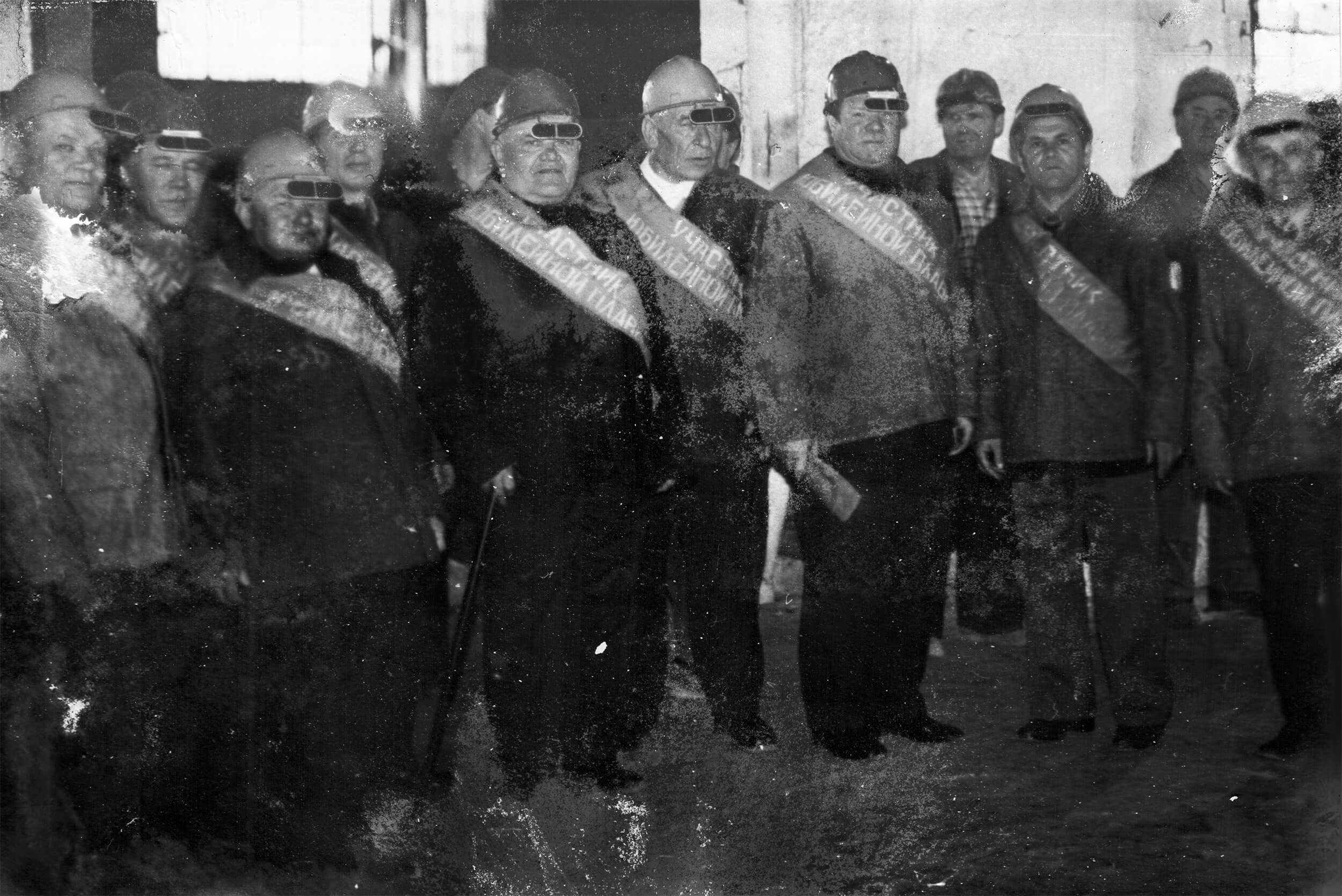

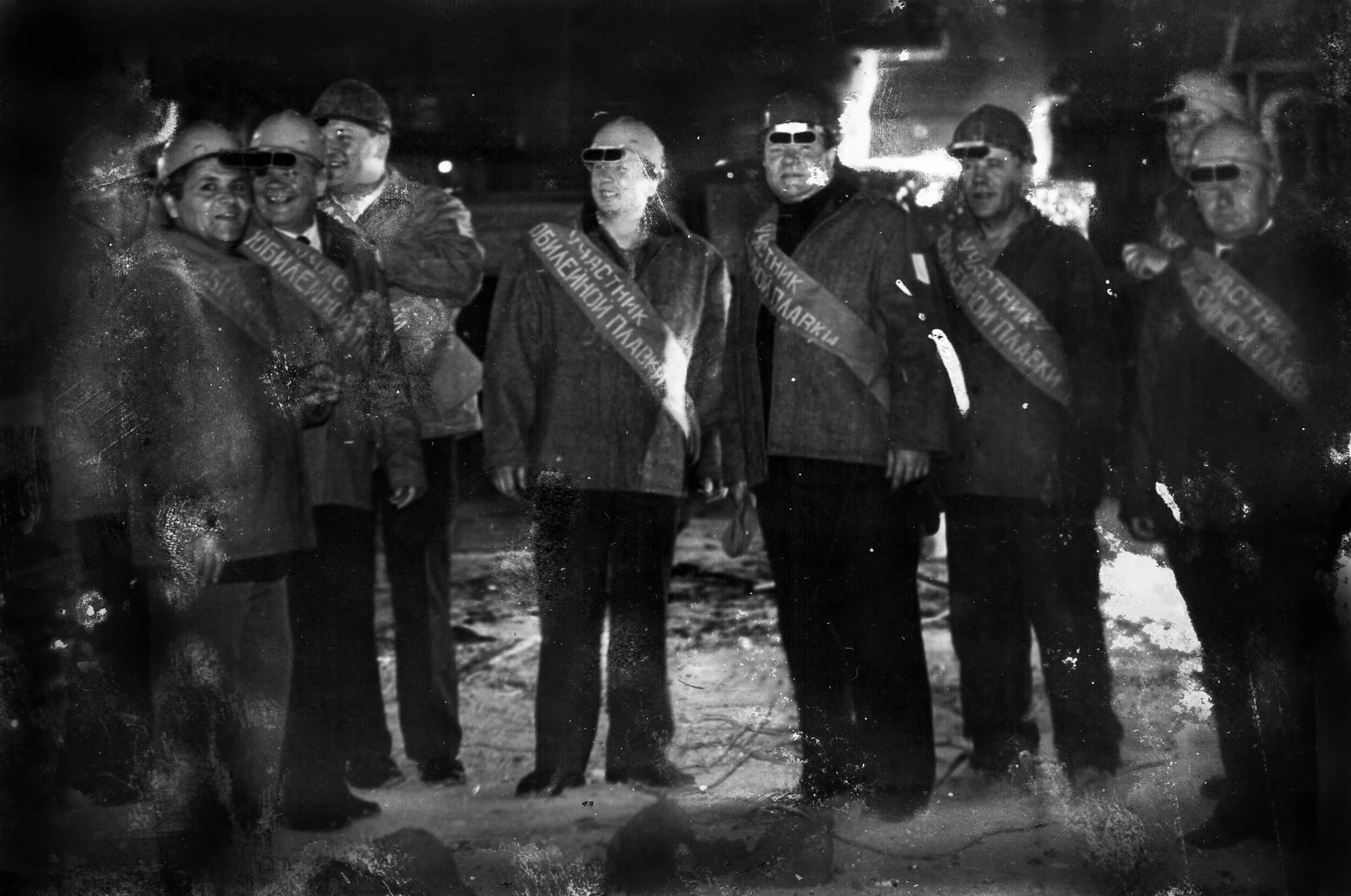
Also in this series there were a couple of photos from the solemn meeting and several photos of veterans of the NPP plant named after. K. Liebknecht on the porch of the Metallurg Palace of Culture.



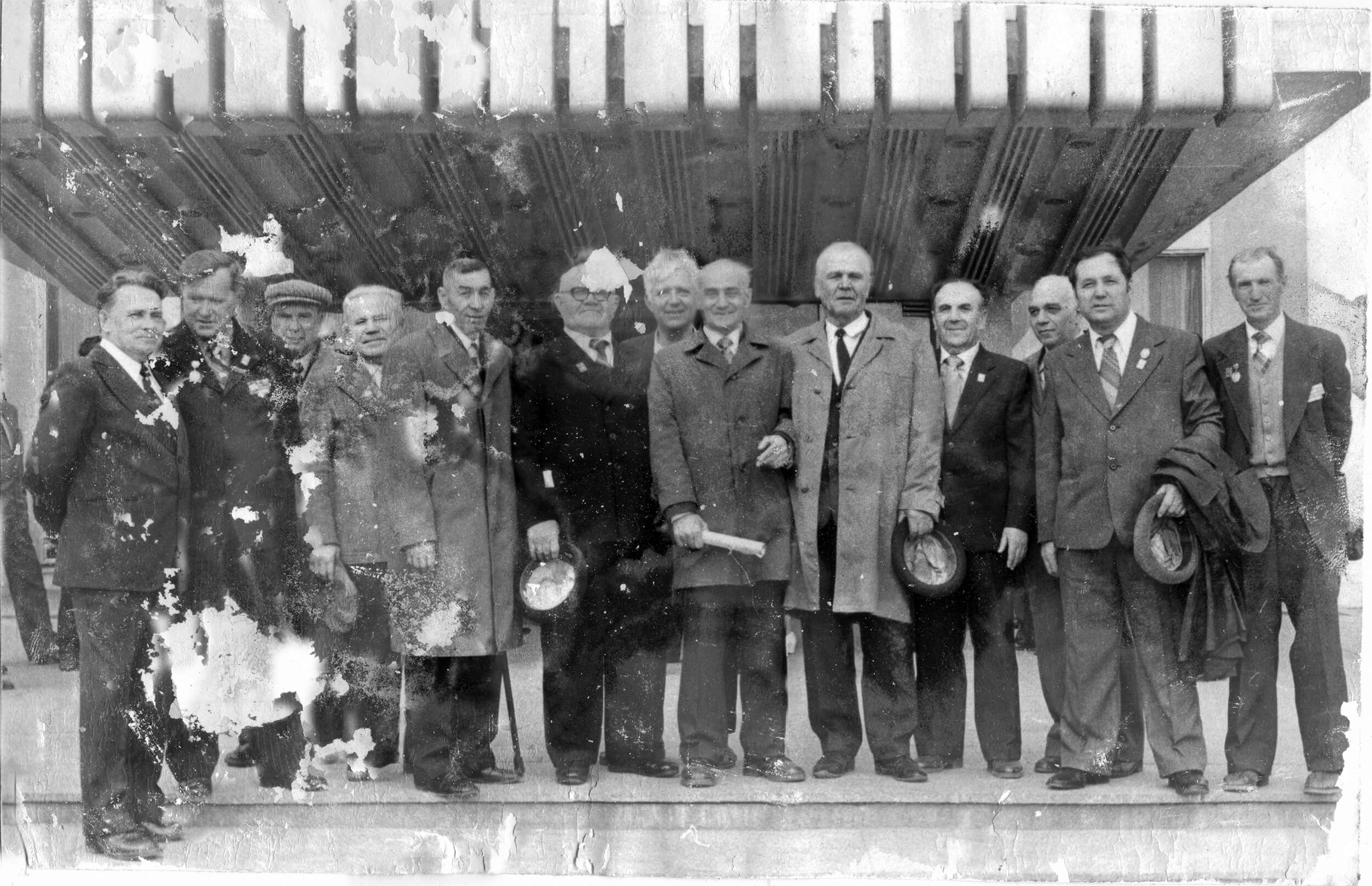
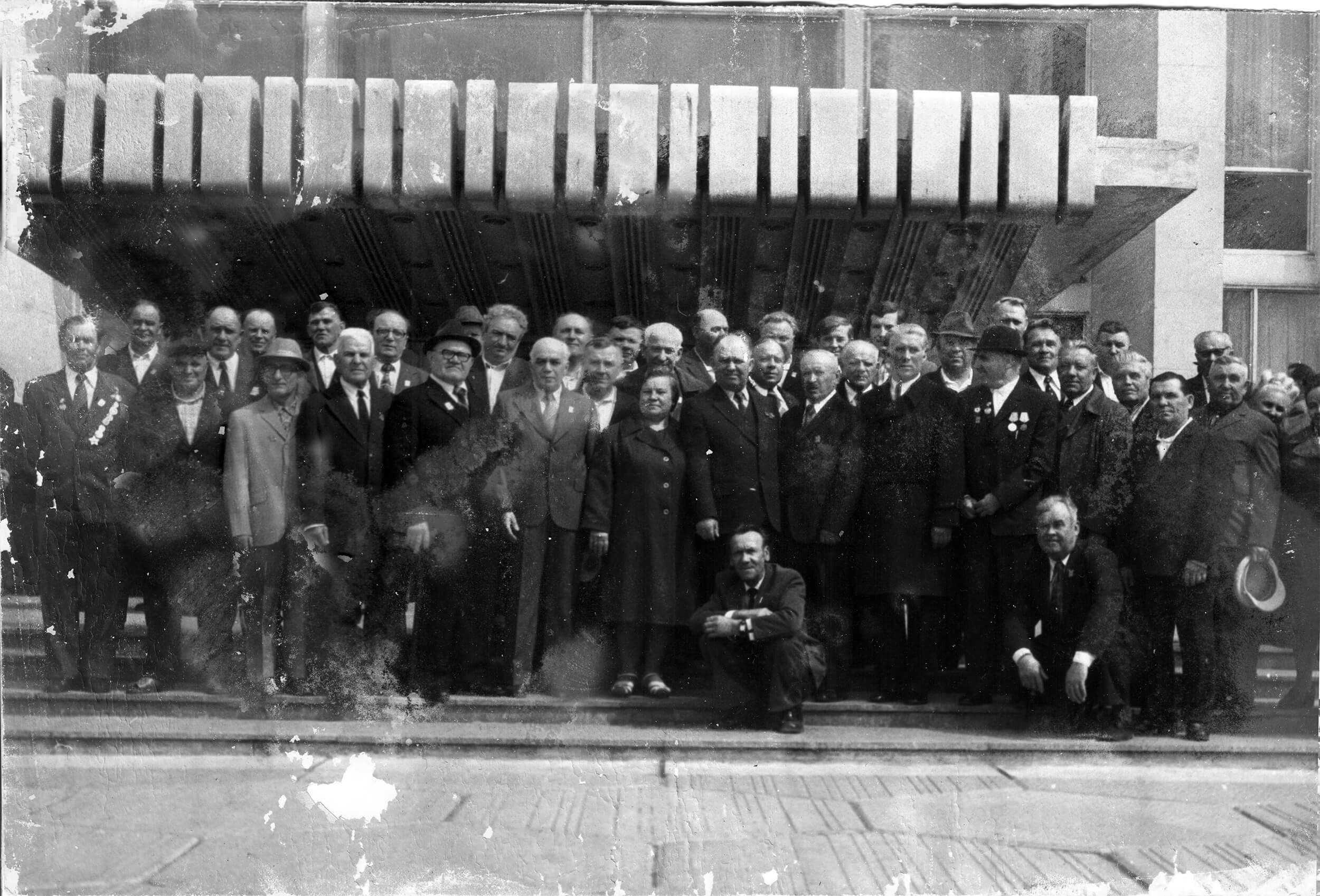
Here is a link to the Google Maps panorama where you can clearly see the same porch of the Metallurgists’ Palace of Culture.



